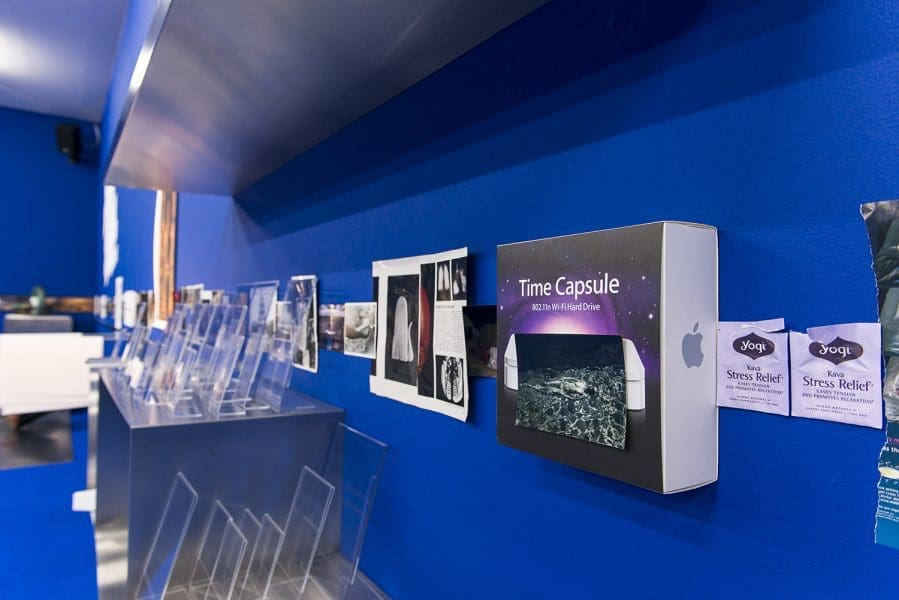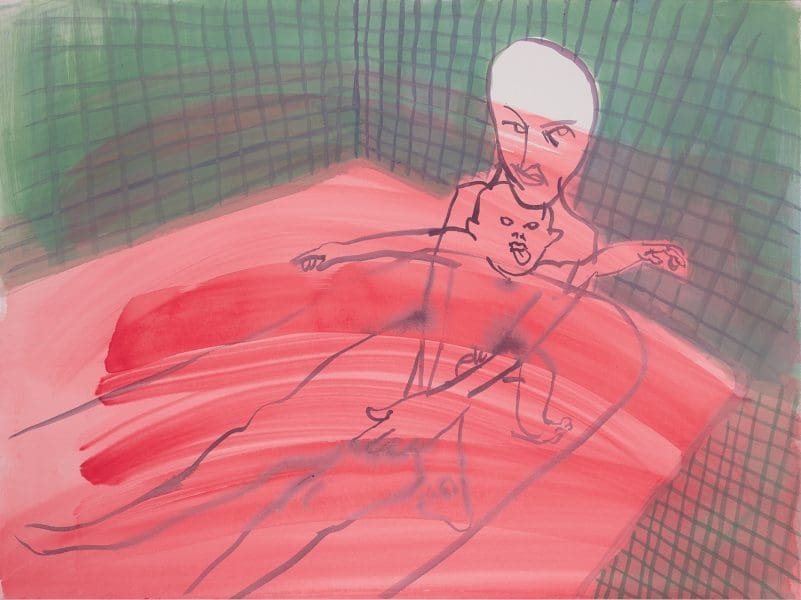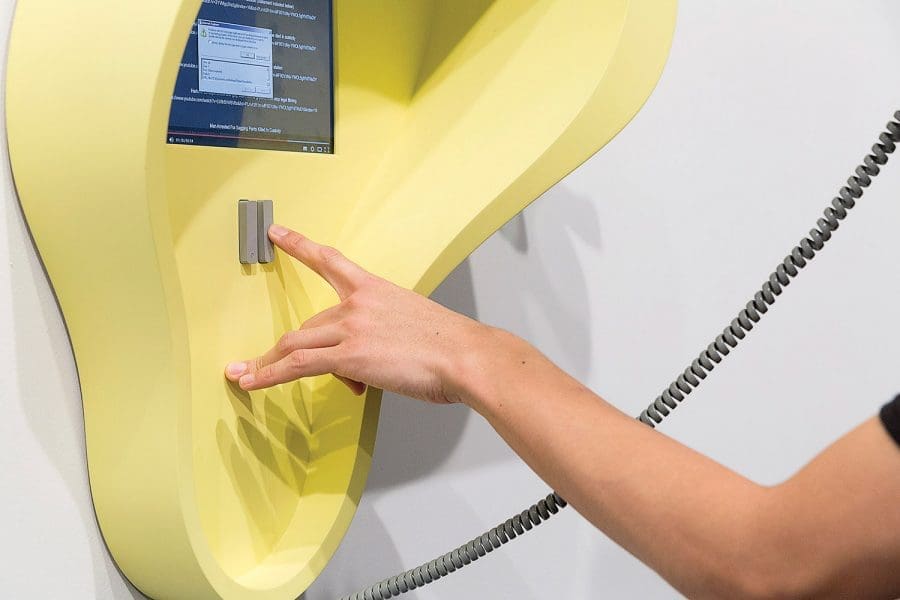
Piercing the veil
A new exhibition at Buxton Contemporary finds a rich complexity in the shadowy terrain between life and death.

Camille Henrot,The Pale Fox 2014 (installation view), mixed media, dimensions variable. Collection of the artist, New York © Camille Henrot. Courtesy of the artist and kamel mennour, Paris/London; König Galerie, Berlin; Metro Pictures, New York. Photographer: Andy Keate.

Camille Henrot,The Pale Fox 2014 (installation view), mixed media, dimensions variable. Collection of the artist, New York © Camille Henrot. Courtesy of the artist and kamel mennour, Paris/London; König Galerie, Berlin; Metro Pictures, New York. Photographer: Andy Keate.

Camille Henrot,The Pale Fox 2014 (installation view), mixed media, dimensions variable. Collection of the artist, New York © Camille Henrot. Courtesy of the artist and kamel mennour, Paris/London; König Galerie, Berlin; Metro Pictures, New York. Photographer: Andy Keate.

Camille Henrot, From the System of Attachment series 2019, watercolour on paper, 55.9cm x 76.2cm (each) © Camille Henrot. Courtesy of the artist.

Camille Henrot, Is He Cheating from the Interphones series 2015, interactive sculpture, mixed media, 96.2 x 24.1 x 8.3 cm (overall) © Camille Henrot. Courtesy of the artist and Metro Pictures, New York.

Camille Henrot, Bad Dad & Beyond from the Interphones series 2015 (installation view), interactive sculpture, mixed media, 111.8 x 50.8 x 22.9 cm (overall) © Camille Henrot. Courtesy of the artist and Metro Pictures, New York.
The art of Camille Henrot slips from medium, through genre, from objects to people, while maintaining a certain panache. Meaning is formed and then eluded. Preoccupied with anthropology and collecting, her work taps into a curiosity that drives art-making, the humanities, science and indeed a vast amount of human intellectual activity: it speaks to our innate desire to understand and know, ultimately undermined by the excess of what is out there.
Henrot explores, on the one hand, the human desire to record, collect and understand, and, on the other, the frenzied drive and complications that disrupt the order of cataloguing and production of knowledge. In the French artist’s practice, museum collections—and the study of cultures and different belief systems—share qualities with the digitally networked space. There is uncertainty around the source materials in her artworks: video footage that appears ‘found’ might in fact have been filmed by Henrot, and objects that appear handmade were bought from eBay and thrift markets. The muddling of consumption and production reflects the contemporary moment: in the online world, consumers are also producers as tweets are retweeted and memes shared in mass hyperactivity.
Like many contemporary artists, however, Henrot’s work exceeds these specific concerns of the digital and collecting, covering diverse terrain in medium and content. Having trained as an animator, she produces films, installation, sculpture and watercolours. Her work is informed by extensive research and a range of theory typical of French education. A cool removed style and wit pervades in an oeuvre which deals with an outer world, one of diverse societies and systems, as well as the unpredictable and unclassifiable inner psychological life of the self.

Is Today Tomorrow, Henrot’s survey at the National Gallery of Victoria (NGV), is the artist’s first major exhibition in Australia. Jane Devery, the gallery’s curator of contemporary art, says of Henrot’s work: “She’s inspired by Surrealists, different types of systems, the internet and randomness and the excess of information, and also how disparate things can be thrown together to create poetic but unexpected resonances.” Her work takes on big topics that bring together cosmological and sociological angles, such as her acclaimed video work Grosse Fatigue, 2013, translated to ‘great exhaustion’, where images of animals and artefacts from the Smithsonian’s storerooms are set to a rap-like verse, a mash-up of creation myths from different cultures.
A companion work, The Pale Fox, 2014, will show in Is Today Tomorrow. “The Pale Fox is very key in that it relates to Grosse Fatigue and comes out of Henrot’s interest in the way we understand the world through objects,” says Devery. “She is dealing with ‘cataloguing psychosis’ as she calls it.” This large-scale installation includes over 500 objects encompassing books, drawings, photographs and sculptures; some were sourced by Henrot from eBay while others were made by the artist in the traditional sense. “She’s looking at this idea that there’s no one way of accounting for the history of the universe,” continues Devery. “Throwing all these ideas and systems of belief together to make the point that any universalised knowledge is kind of futile.”
Another feature of Henrot’s work is its questioning of authority. Her Interphones series consists of interactive phone sculptures in pastel colours and cartoon retro shapes. When lifted by the visitor, each phone asks questions that are commonly typed into Google, such as ‘Would you ever have sex at work?’ and ‘Are you gluten free?’. “They’re about authority and the way that we’re obsessed with googling to get the answer to everything and we’re obedient often in what Google tells us,” says Devery.
“It’s about our relations and our relationship to authority, but they’re playful. One of the overriding aspects of her work is that she does often use humour even though there’s a serious underpinning.” Henrot has also been working on a new suite of watercolours. “More recently her watercolours often explore human relationships and psychology,” says Devery. “The series is called Systems of Attachment. There’s very fluid imagery dealing with children and mothers. It’s about ageing and the passing of time and the human body, and where external and internal worlds meet.”
Camille Henrot: Is Today Tomorrow
National Gallery of Victoria (NGV International)
25 June – 24 October
This article was originally published in the May/June 2020 print edition of Art Guide Australia.